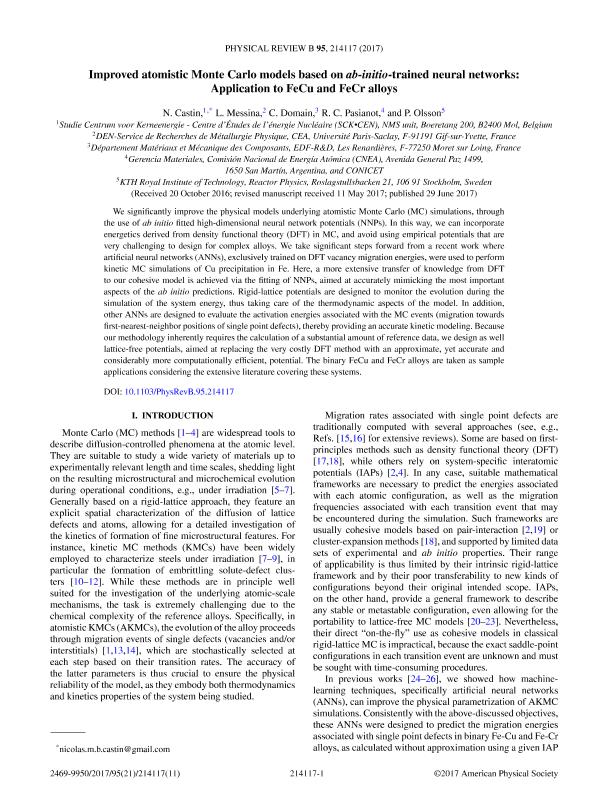Artículo
Improved atomistic Monte Carlo models based on ab-initio -trained neural networks: Application to FeCu and FeCr alloys
Fecha de publicación:
06/2017
Editorial:
American Physical Society
Revista:
Physical Review B
ISSN:
2469-9950
e-ISSN:
2469-9969
Idioma:
Inglés
Tipo de recurso:
Artículo publicado
Clasificación temática:
Resumen
We significantly improve the physical models underlying atomistic Monte Carlo (MC) simulations, through the use of ab initio fitted high-dimensional neural network potentials (NNPs). In this way, we can incorporate energetics derived from density functional theory (DFT) in MC, and avoid using empirical potentials that are very challenging to design for complex alloys. We take significant steps forward from a recent work where artificial neural networks (ANNs), exclusively trained on DFT vacancy migration energies, were used to perform kinetic MC simulations of Cu precipitation in Fe. Here, a more extensive transfer of knowledge from DFT to our cohesive model is achieved via the fitting of NNPs, aimed at accurately mimicking the most important aspects of the ab initio predictions. Rigid-lattice potentials are designed to monitor the evolution during the simulation of the system energy, thus taking care of the thermodynamic aspects of the model. In addition, other ANNs are designed to evaluate the activation energies associated with the MC events (migration towards first-nearest-neighbor positions of single point defects), thereby providing an accurate kinetic modeling. Because our methodology inherently requires the calculation of a substantial amount of reference data, we design as well lattice-free potentials, aimed at replacing the very costly DFT method with an approximate, yet accurate and considerably more computationally efficient, potential. The binary FeCu and FeCr alloys are taken as sample applications considering the extensive literature covering these systems.
Palabras clave:
Atomistic Montecarlo
,
Ab-Initio
,
Neural Networks
Archivos asociados
Licencia
Identificadores
Colecciones
Articulos(SEDE CENTRAL)
Articulos de SEDE CENTRAL
Articulos de SEDE CENTRAL
Citación
Castin, N.; Messina, L.; Domain, C.; Pasianot, Roberto Cesar; Olsson, P.; Improved atomistic Monte Carlo models based on ab-initio -trained neural networks: Application to FeCu and FeCr alloys; American Physical Society; Physical Review B; 95; 21; 6-2017
Compartir
Altmétricas




